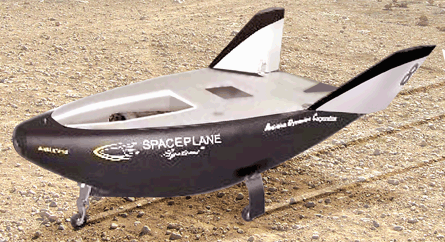Potential military applications for suborbital spaceflight are being studied by some of the biggest players in the US defence industry. Northrop Grumman, Pratt & Whitney and Alliant Techsystems (ATK) have all made suborbital transport proposals in closed sessions to the US government's National Space Security Office (NSSO), Flight International can reveal.
As reported earlier this month (Flight International, 10-16 March), an NSSO technology forum at Lackland AFB in Texas from 24-26 February featured proposals from companies associated with suborbital tourism. But it has emerged that several aerospace prime contractors also took part, along with the US Air Force Research Laboratory and space and missile command, and NASA's commercial crew and cargo office.
The NSSO is interested in near-term technologies that can launch on 2h notice and deliver within a 2h flight time a 200kg (440lb) payload to a destination 9,250km (5,000nm) away.
In February it released a request for information describing this and preferred future capabilities that included 13,360kg payloads being suborbitally delivered into theatre. The 2h response requirement is akin to the Department of Defense's Operationally Responsive Space office's needs. Companies had till 15 March to submit their information. A request for proposals is expected to follow.
 |
|---|
© Tim Bicheno-Brown/US Space Plane SystemsThe US Space Plane Systems’ orbital vehicle Eagle Flyer is a concept based on NASA Ames Research Center’s 1960s lifting body M-2 design |
As well as the aerospace primes, suborbital spaceflight companies also had closed sessions. These included Rocketplane, Xcor Aerospace and Blue Origin, which is developing its suborbital rocket and capsule in secrecy.
Blue Origin's general counsel Robert Millman gave a closed session presentation aided by Brett Alexander, Personal Spaceflight Federation president and a consultant to Blue Origin.
Alexander also gave a conference presentation about the commercial human spaceflight industry and told Flight International that "all the right people" were there from the DoD, but it is "nowhere near an acquisition". He says Blue Origin spoke about its suborbital activities.
E'Prime Aerospace, a company developing rockets using US intercontinental ballistic missile Peacekeeper technology, gave a joint closed session presentation with US Space Plane Systems, which has a lifting body concept that is similar to the NASA Ames Research Center's 1960s M-2 design. E'Prime has struggled with international treaty restrictions on ICBM technology, management board changes and funding challenges. Virgin Galactic only attended as an observer.
Under the Operationally Responsive Space office initiative Northrop was contracted to examine launch vehicles in 2006 and in December ATK won a subsystem award for the first satellite.
Source: Flight International



















